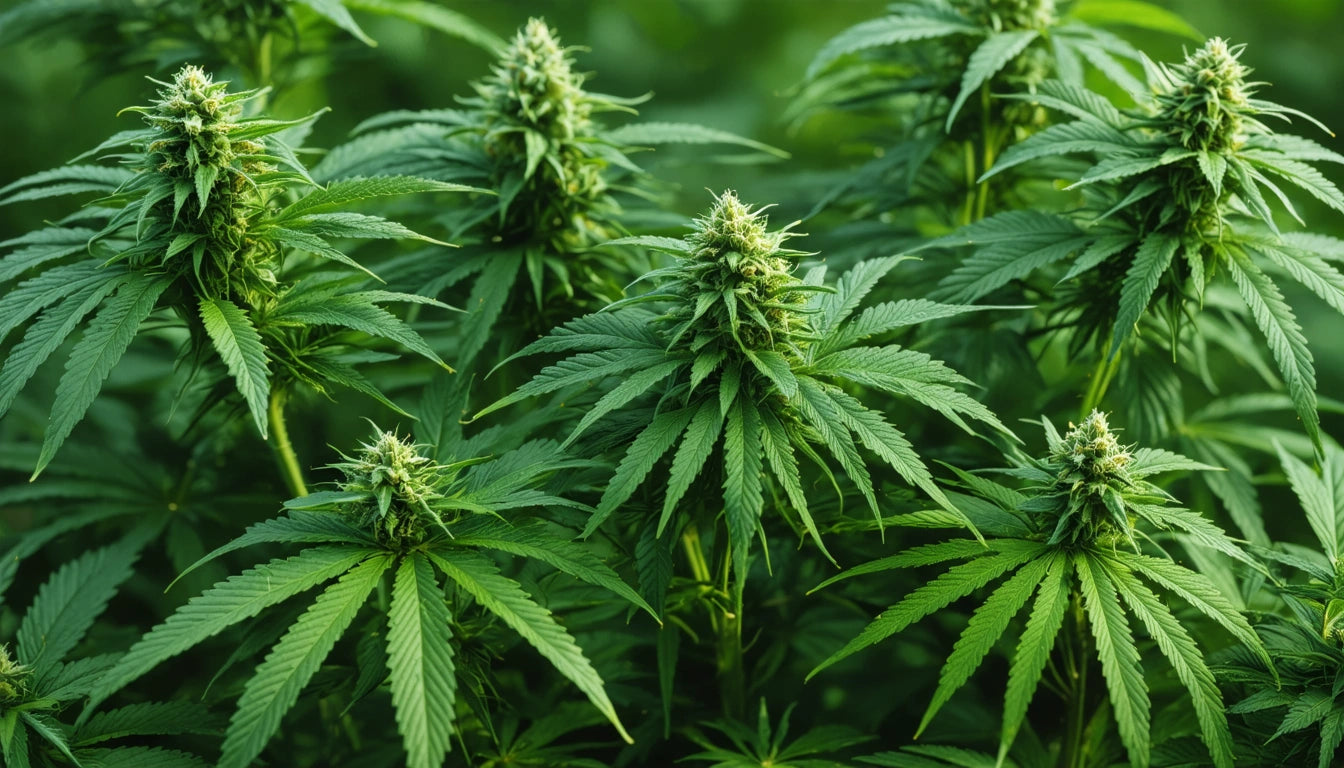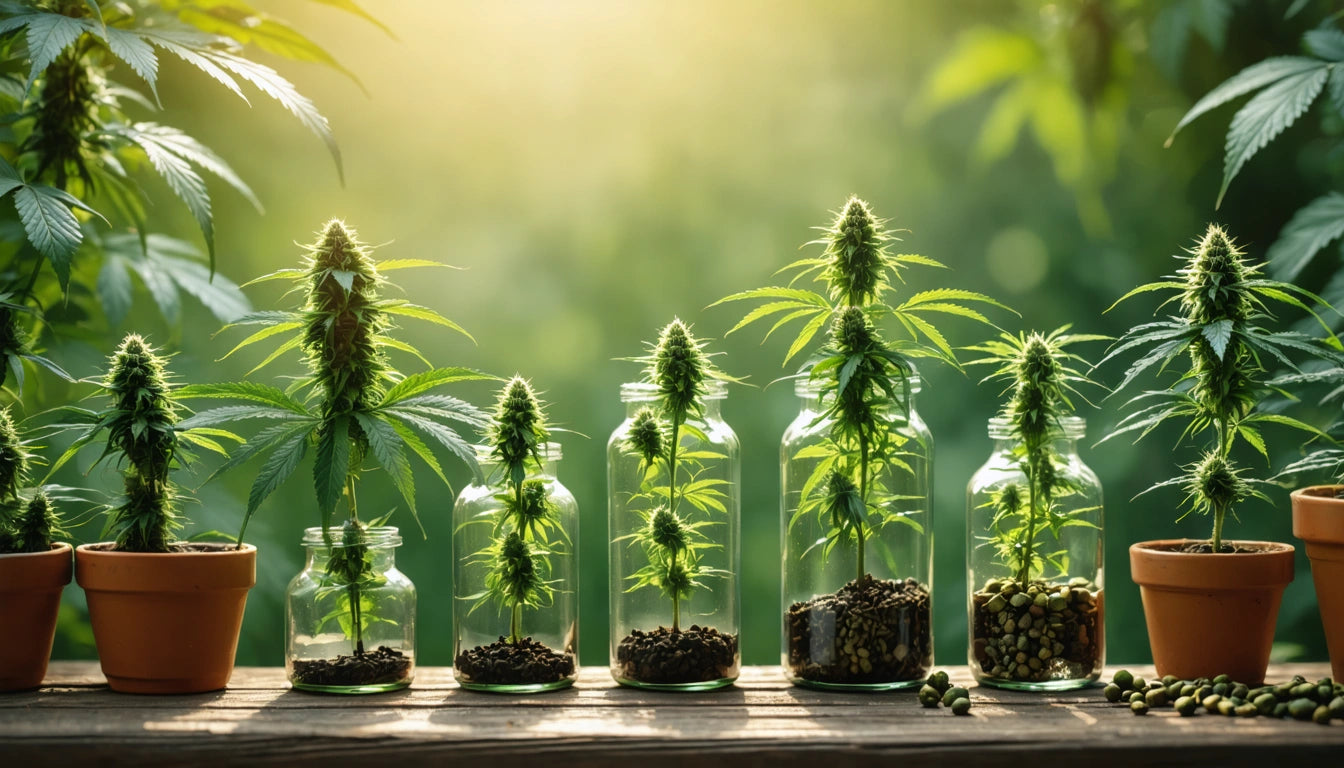Table of Contents
Top Nutrients for Growing Cannabis: A Comprehensive Guide to the Best Options for Soil and Flowering Stages
Selecting the right nutrients for cannabis cultivation can significantly impact your harvest quality and yield. Whether you're growing in soil or focusing on maximizing flower production, understanding the best nutrients for cannabis at each growth stage is essential for success.
Understanding Cannabis Nutrient Needs
Cannabis plants require three primary macronutrients: Nitrogen (N), Phosphorus (P), and Potassium (K). During vegetative growth, plants need higher nitrogen levels, while flowering stages benefit from increased phosphorus and potassium. Secondary nutrients like Calcium, Magnesium, and Sulfur, along with micronutrients such as Iron, Manganese, and Zinc, are also vital for overall plant health.
According to cannabis growth optimization research, maintaining proper nutrient ratios throughout the growing cycle is crucial for preventing deficiencies or toxicities that can harm your plants.
Best Organic Nutrients for Cannabis
Organic nutrients offer several advantages for cannabis grown in soil, including improved flavor profiles and sustainable growing practices.
Top Organic Options:
- Compost Tea: Rich in beneficial microorganisms that enhance soil health and nutrient availability.
- Worm Castings: Provides slow-release nutrients and improves soil structure.
- Bat Guano: High in phosphorus, making it excellent for the flowering stage.
- Fish Emulsion: Nitrogen-rich supplement ideal for vegetative growth.
- Bone Meal: Phosphorus-rich amendment that supports root development and flowering.
Many growers prefer organic nutrients for their ability to build living soil ecosystems that naturally support plant health. As noted in this comprehensive nutrient guide, organic amendments typically release nutrients slowly, reducing the risk of nutrient burn.
Top Synthetic Nutrients for Cannabis
Synthetic nutrients provide precise control over nutrient delivery and are readily available to plants.
Leading Synthetic Nutrient Lines:
- Fox Farm Trio: Popular three-part system with specific formulations for growth and bloom stages.
- Advanced Nutrients: pH-perfect technology eliminates the need for constant pH adjustments.
- General Hydroponics Flora Series: Versatile three-part system that can be adjusted for different growth stages.
- Botanicare: Plant-based nutrients with synthetic enhancements for optimal results.
Synthetic nutrients allow for precise adjustments based on plant needs and growth stages. They're particularly useful when addressing specific deficiencies or when growing in soilless mediums.
Specialized Nutrients for Flowering Stage
The flowering stage is critical for cannabis cultivation, requiring specific nutrient ratios to maximize bud development.
Best Nutrients for Flowering Cannabis:
- Bloom Boosters: High in phosphorus and potassium to encourage bud formation.
- Cal-Mag Supplements: Essential during flowering when demand for calcium and magnesium increases.
- Carbohydrate Supplements: Provide energy for bud development and enhance terpene production.
- Silica Additives: Strengthen cell walls to support heavier buds.
During flowering, reduce nitrogen while increasing phosphorus and potassium. This nutrient shift encourages the plant to focus energy on bud production rather than leaf growth. Expert growing tips suggest gradually transitioning to bloom-specific nutrients when flowering begins.
Soil-Specific Nutrient Considerations
Growing cannabis in soil requires understanding how nutrients interact with the growing medium.
Key Considerations for Soil Growers:
- Soil pH: Maintain between 6.0-7.0 for optimal nutrient absorption.
- Pre-fertilized Soils: Many commercial cannabis soils contain nutrients sufficient for the first few weeks.
- Soil Amendments: Perlite, vermiculite, and coco coir can improve drainage and aeration.
- Mycorrhizal Fungi: Enhance nutrient uptake by forming symbiotic relationships with cannabis roots.
Quality soil creates a buffer for nutrients, reducing the risk of nutrient lockout compared to hydroponic systems. Best practices guides often recommend starting with slightly amended soil and gradually introducing nutrients as plants mature.
Nutrient Feeding Schedules and Application
Proper application of nutrients is just as important as selecting the right products.
Feeding Best Practices:
- Start Light: Begin with 1/4 to 1/2 strength of recommended dosages.
- Increase Gradually: Slowly work up to full-strength applications as plants mature.
- Flush Regularly: Water with plain pH-adjusted water every few feedings to prevent salt buildup.
- Monitor Runoff: Check pH and PPM/EC of water draining from pots to gauge nutrient levels.
Most nutrient problems stem from overfeeding rather than underfeeding. When in doubt, it's better to feed less frequently with properly diluted solutions. Proper storage of nutrients is also essential, similar to how safety standards for packaging hazardous materials ensure product integrity and prevent accidents.
Future Innovations in Cannabis Nutrition
The cannabis nutrition field continues to evolve with new research and product development.
Emerging trends include custom-tailored nutrient profiles based on specific cannabis strains, biologicals that enhance nutrient uptake, and sustainable nutrient sources that reduce environmental impact. Advanced cultivation guides suggest that strain-specific feeding programs may become standard as our understanding of cannabis genetics improves.
As the cannabis industry matures, expect to see more precise, environmentally friendly nutrient solutions that maximize both yield and quality while minimizing resource use. The best approach for most growers is to start with proven nutrient lines, carefully observe plant responses, and make adjustments based on specific growing conditions and plant needs.











Leave a comment
All comments are moderated before being published.
This site is protected by hCaptcha and the hCaptcha Privacy Policy and Terms of Service apply.